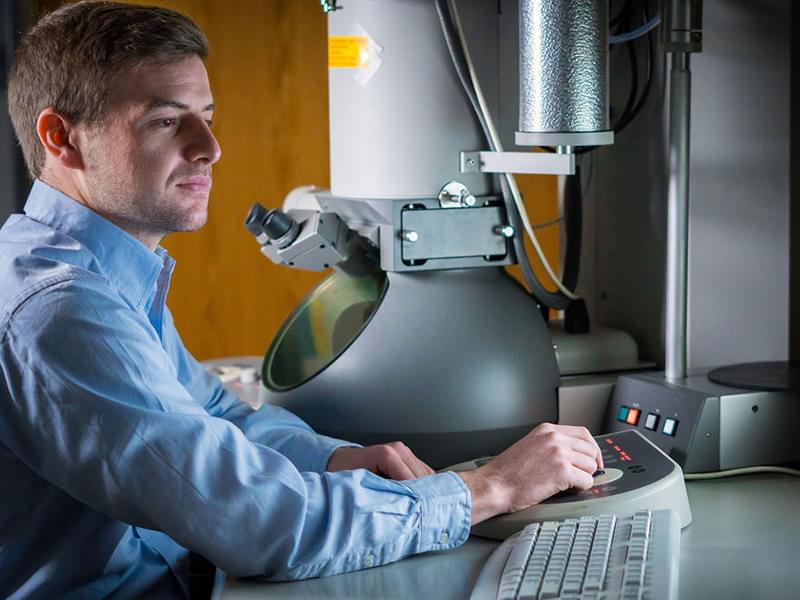Keegan Moss is a chemist in the Smithers
chemical analysis laboratory in Akron, Ohio. He joined Smithers in 2017 as an intern. He recently earned a Master’s of Science in chemistry from Cleveland State University.
What keeps you busy every day?
Most days I am preparing carbon black samples for analysis with transmission electron microscopy (TEM), analyzing polymer samples with
FTIR or
Differential Scanning Calorimetry, or performing other chemical testing on polymers.
You have developed an updated method for conducting carbon black particle analysis. What did that process look like when you first joined Smithers?
We were using TEM to zoom in on large groups of carbon black particles to fit as many particles into one image as possible. We often spent a lot of time scanning the sample just to try and find groups of particles that were large enough to count.
One of our technicians was using an instrument to manually count and measure each particle and calculate an average from that data. Needless to say, this was very strenuous on the eyes, especially since it can be difficult to distinguish individual particles from a large group; they just look like stacked and overlaid ovals at first glance. To measure the particles, we were using an open source image analysis software to measure minimum Feret diameters. Our results were very accurate, but unfortunately, the process was very time intensive.
Eventually you were tasked with developing a faster, automated method for conducting carbon black particle analysis. How did you approach that? What does the new process look like?
When we began improving our method, we started by looking for a method using ImageJ or another software that would measure individual particles automatically. But carbon black forms grape-like clusters, which makes distinguishing individual particles difficult, and we were not able to do this automatically as much of the analysis is looking at particles that overlap one another. Shortly thereafter we decided to explore the approach of extrapolating particle measurement from aggregate properties – similar to that found in ASTM D3849.
We began looking at options for automated image analysis that allowed for the development of methods that can be used for very specific needs. We also started examining the efficacy of ASTM D3849 and began extensive testing of controls. We eventually found a way to improve upon the method to meet the needs of our specific testing requirements.
What are the outcomes of this new method?
This new method allows us to quickly analyze a large number of samples with a similar accuracy as measuring individual particles. We do this using the same tools, software, and TEM. The magnification is much lower than before, to allow for the maximum number of aggregates to be captured in each image. The output is a comprehensive data set of aggregate particle and primary particle statistics, as well as an estimation of bulk properties.
Overall, this automated process is much faster, yields more data, and is customizable to sample type and materials other than carbon black.
What do our clients use carbon black data for?
Identification of the particle size and structure of the carbon black is important. Our clients use carbon black to affect the characteristics and performance of a product. Carbon black is most often used as a reinforcing filler in rubber and affects the physical properties,
hysteretic properties, flexibility and tear strength of materials, it can affect product longevity, electrical conductivity, and color among others. Different types and grades of carbon black affect each of these properties differently.
How does this new method benefit Smithers clients?
With this new method, we can give our clients more data beyond particle size and better images of the carbon black. Additionally, this method is much more efficient. It is customizable and can be modified to meet our clients’ specific needs. It used to take several hours to give one measurement. Now it only takes a few minutes to produce a list of different measurements of the particles and aggregates in a sample.
What is next?
Now that we have honed the method just described, I am working with Dr. Dustin Jenkins to use this data to correlate to other established test parameters for carbon black, such as iodine number, oil absorption, and nitrogen surface area. We also continue to hone prep methods to apply to other materials, such as silicas used in high performance tire treads.



